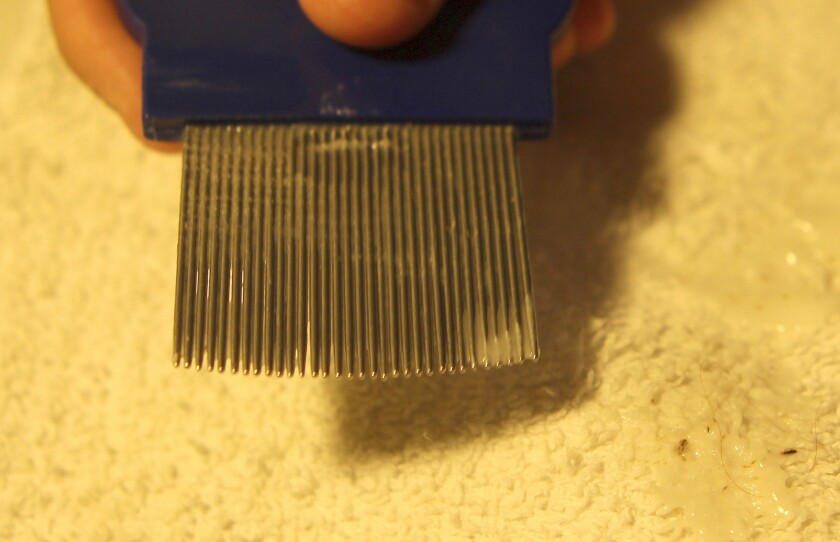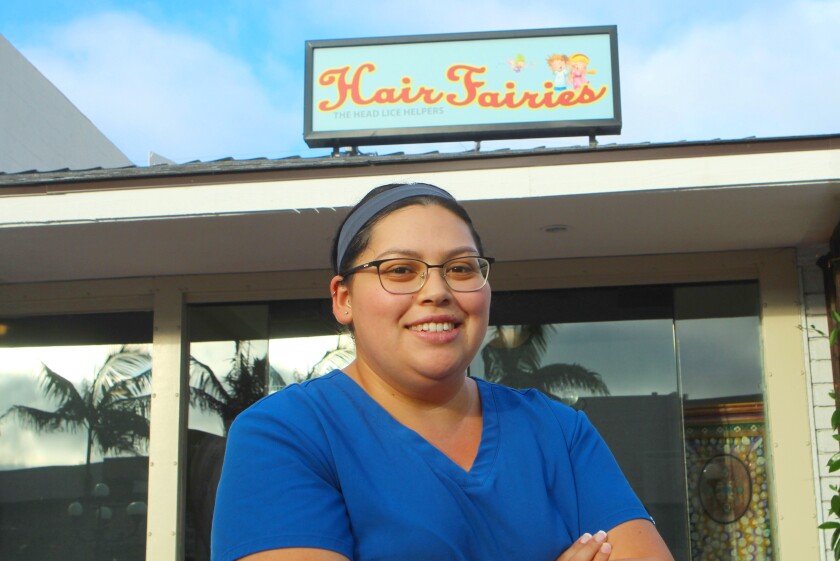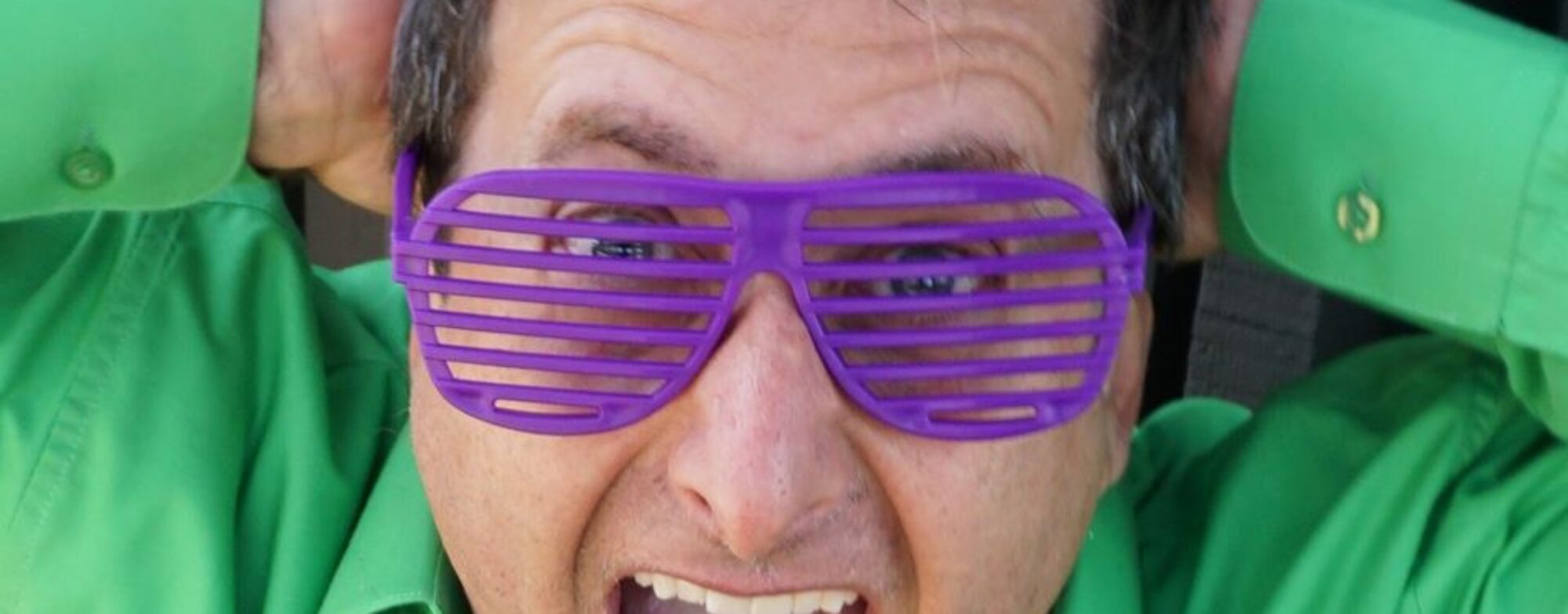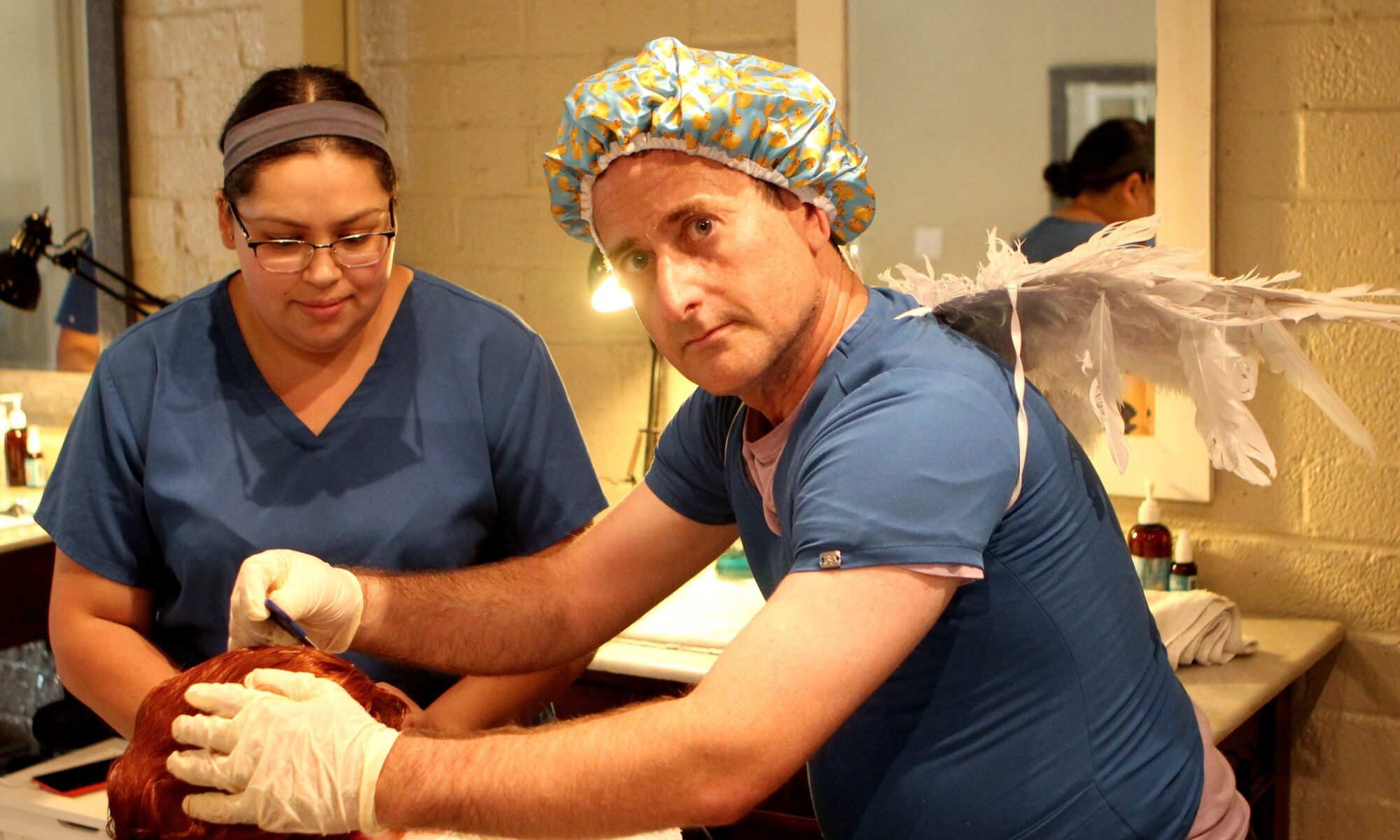By COREY LEVITAN
The comb I’m running through the hair of a 7-year-old boy has two sesame seeds on it. Both are dark brown and moving.
I have hated nit-picking before, but never like this.
“Comb at more of an angle,” I’m instructed by Bianca Ocon. “Front to back, then side to side.”
Ocon, 26, from Golden Hill, is the assistant manager and one of five lice fairies at Hair Fairies, 5727 La Jolla Blvd. The L.A.-based chain — which is in 10 cities, with La Jolla being their only San Diego location — resembles a standard hair salon except without the floor sweepings and with the word “lice” on its storefront sign. Although most in the lice-fairying business are also trained hair stylists, Ocon says she was offered the job four years ago because she knew a former manager.
“I’ve never worked with hair before,” she admits. “I was looking for a job and that was pretty much it.”
There are good parts to it, she insists, which include helping people, meeting tourists from around the world, and interacting with kids. (Ocon is currently enrolled in the child development program at San Diego City College and says she plans to become a preschool teacher.)
Since the San Diego School District resumes classes Monday, Aug. 26, Hair Fairies is crawling with clients who suspect they might be crawling. From 10 a.m. to 7 p.m., more than 20 (mostly grade-school children and their concerned parents) enter for appointments.
My client and his mother are vacationing nearby from out of town. She suspected lice, she said, when my client couldn’t stop stratching his head at the beach a few days earlier.
“But then I looked and figured it was just sand, since it gets everywhere,” she said, “or I guess maybe I hoped it was just sand.” She made the appointment for their last day visiting La Jolla.

At first, my client’s mother declined my request to donate her child’s head to journalism. But when I tried on the only spare uniform Ocon had in back (an extra-small) and slipped on the fairy wings my 8-year-old daughter leant me from her costume chest, they laughed hard enough to cave in. (The 20 percent discount offered by the salon’s owner helped, too.)
Each of the 80 percent (on average) of Hair Fairies clients screening “lice-positive” requires one-to-three hours to be combed completely clean of the bugs and their eggs (nits). Running $85 per hour, the treatment utilizes lice combs and Hair Fairies’ “Nit Zapping Clenz Cream,” whose label claims to loosen the glue that lice use to fasten their nits to human hair. A follow-up appointment is necessary three-to-four days later to remove all nits that aren’t visible yet. (When freshly laid, they are transparent.)
If you’re thinking this is overkill since lice shampoo is only $15 at Vons, a recent Consumer Reports article cautioned that most lice have developed immunity to the pyrethrin and pyrethroid insecticides in those shampoos. As many as 75 to 95 percent of the lice collected in recent U.S. studies are now “super lice,” according to the article.
“You just got 10 more nits,” Ocon congratulates me as she rubs my lice comb on a fresh towel at her station.
The count so far is 100 — and I have no idea if this is a little or a lot.
“It’s about normal,” Ocon replies. “He’s had it for about a month.” She can tell because they almost always start with one and progress predictably. (“That means he got it at camp,” my client’s mother guesses.)
Spotting lice and their smaller nits has become such a superpower for Ocon, she frequently spots them on people outside the salon. The first time she said anything, on line at the supermarket, the little girl’s mother made an angry scene.
“And that’s why I don’t say anything anymore,” she says.
Ocon will occasionally treat someone who has let things explode into a 500-bug situation — six months or more after the first louse checked into their hair hotel.
“That’s a lot,” she says, suggesting that every parent of a small child check everyone in the family once or twice a month, so it never gets so out of control. (To repel lice, Ocon recommends tea-tree oil, which she says they hate, cut with either olive or coconut oil, since straight tea-tree oil burns.)
According to the Centers for Disease Control and Prevention, between 6 and 12 million lice infestations are reported every year in the United States among children ages 3 to 11. But the number has to be much higher because ... well, would you report your child having lice to an authority?
Lice have given humankind companionship for many more eons than even dogs. The first human-exclusive species developed 5 million years ago and never left us. Anyone can get lice, not just dirty people. Yet society programs us to make that connection. For instance, “cooties,” now playground-speak for germs or an imaginary disease, originally meant lice. “Crummy” referred to the crumb-like eggs in infested hair. And “lousy” is so obvious, I just blew your mind right now.

This stigma is why I was asked to keep all identifying information about my client out of this story by his mother. And it’s why Ocon refuses to tell all but her closest friends and family members what she does for a living.
“I tell them I work in a medical clinic, which is true sort of,” she says.
And revealing that she’s a lice fairy to a significant other is, according to Ocon, a fourth-date occurrence “at least.”
It’s not that she’s embarrassed, Ocon explains, “it’s just that it usually leads to an argument with someone who doesn’t know how lice are spread.”
Tons of people think the bugs can jump or fly from one head to the next, she says, which isn’t true. They can only spread by head-to-head contact or — way more rarely — close contact with an object or body part very recently in contact with a lice-infested head. That’s why Ocon doesn’t even bother removing lice wearing a head covering or gloves.
“I know enough now not to touch my fingers to my hair,” she says.
Wait ... now?
“Yes, I got lice from this job once,” she admits. “I don’t know how, but it was when I first started, so I must have touched my hair with my fingers.”
This was the point at which I sprinted to CVS so I could finish the job with latex gloves and the only head covering I could find there — a women’s rubber-ducky shower cap.
A little more than two hours after his treatment began, my client’s final nit is picked by Ocon. Mother and son are instructed to make a follow-up appointment at the Hair Fairies in their hometown.
I ask Ocon to rate me as potential fairy material — and not to sugar-coat it, since I’m seriously considering my options should this journalism thing stop working out.
“You were actually pretty good,” she says.
My daughter’s wings are now earned.
— To schedule an appointment at Hair Fairies, call (619) 728-5423. hairfairies.com
[/pl_text]

